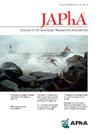The impact of a pharmacist-led Comprehensive Diabetes Management Program (CDMP) in a Federally Qualified Health Center (FQHC)
IF 2.5
4区 医学
Q3 PHARMACOLOGY & PHARMACY
Journal of the American Pharmacists Association
Pub Date : 2025-04-11
DOI:10.1016/j.japh.2025.102399
引用次数: 0
Abstract
Background
Diabetes mellitus is a prevalent chronic disease associated with significant complications and economic burdens. A substantial portion of the population in the United States has diabetes, with considerable variability in achieving treatment targets. Yearly estimates of the national burden reach billions of dollars. In response to a request from a Federally Qualified Health Center, the Center for Innovative Pharmacy Solutions at the University of Maryland School of Pharmacy developed a Comprehensive Diabetes Management Program (CDMP). Clinical pharmacists and a licensed dietitian provided direct patient-care services to address high A1C levels, limited health care access, and health literacy. Patients were eligible for the CDMP if the most recent hemoglobin A1c was >7%. The program involved comprehensive patient evaluation, treatment optimization, educational initiatives, and interdisciplinary collaboration.
Objective
This study aimed to assess the impact of pharmacist-led interventions on clinical and economic outcomes within the CDMP.
Methods
This retrospective, 2-year prepost analysis study includes clinical and economic analyses of patients enrolled between August 1, 2021, and August 31, 2023. Patients were included if they attended more than one pharmacy visit with an available postintervention A1c. The primary clinical outcome was the change in A1c level from baseline to follow-up analyzed using a paired t-test and McNemar's test for categorical changes. Costs were analyzed using hospitalizations and utilization data retrieved from the regional health information exchange. A segmented regression of interrupted time series was conducted to evaluate cost trends, and the return on investment was calculated.
Results
The study enrolled 518 patients, revealing a statistically significant mean reduction in A1c levels, alongside observed cost savings in health care utilization due to reduced hospitalizations.
Conclusion
This study underscores the considerable advantages of integrating pharmacists into diabetes management programs, particularly for patients with elevated A1c levels >9%.
药剂师主导的糖尿病综合管理项目(CDMP)在联邦合格医疗中心(FQHC)的影响
背景:糖尿病是一种常见的慢性疾病,具有显著的并发症和经济负担。美国有相当一部分人口患有糖尿病,在实现治疗目标方面存在相当大的差异。据估计,每年的国家负担达到数十亿美元。应联邦合格健康中心的要求,马里兰大学药学院创新药房解决方案中心开发了一项综合糖尿病管理计划(CDMP)。临床药师和有执照的营养师提供直接的患者护理服务,以解决高糖化血红蛋白水平、有限的医疗保健机会和健康素养问题。如果患者最近的血红蛋白A1c为7%,则符合CDMP的条件。该项目包括全面的患者评估、治疗优化、教育倡议和跨学科合作。目的本研究旨在评估药师主导的干预措施对CDMP临床和经济结果的影响。方法:这项为期2年的回顾性研究包括对2021年8月1日至2023年8月31日入组的患者进行临床和经济分析。如果患者在干预后有可用的糖化血红蛋白,他们参加了一次以上的药房就诊。主要临床结果是A1c水平从基线到随访的变化,使用配对t检验和McNemar的分类变化检验进行分析。使用从区域卫生信息交换中检索的住院和利用数据对成本进行了分析。对中断时间序列进行分段回归,评估成本趋势,并计算投资回报率。结果该研究纳入了518名患者,结果显示A1c水平的平均降低在统计学上具有显著意义,同时由于住院次数减少,观察到医疗保健利用的成本节约。结论:本研究强调了将药剂师纳入糖尿病管理计划的巨大优势,特别是对于A1c水平升高的患者。
本文章由计算机程序翻译,如有差异,请以英文原文为准。
求助全文
约1分钟内获得全文
求助全文
来源期刊
CiteScore
3.30
自引率
14.30%
发文量
336
审稿时长
46 days
期刊介绍:
The Journal of the American Pharmacists Association is the official peer-reviewed journal of the American Pharmacists Association (APhA), providing information on pharmaceutical care, drug therapy, diseases and other health issues, trends in pharmacy practice and therapeutics, informed opinion, and original research. JAPhA publishes original research, reviews, experiences, and opinion articles that link science to contemporary pharmacy practice to improve patient care.

 求助内容:
求助内容: 应助结果提醒方式:
应助结果提醒方式:


